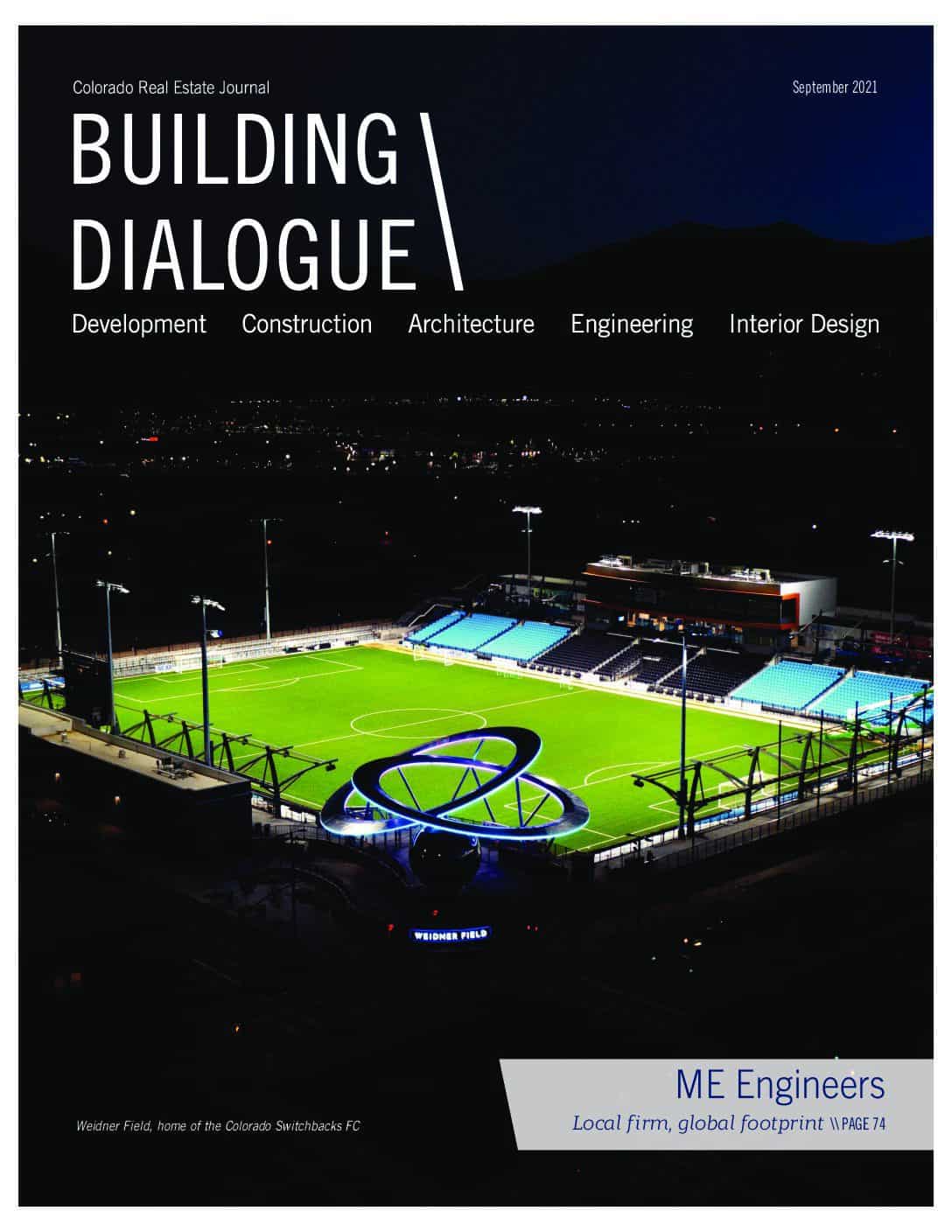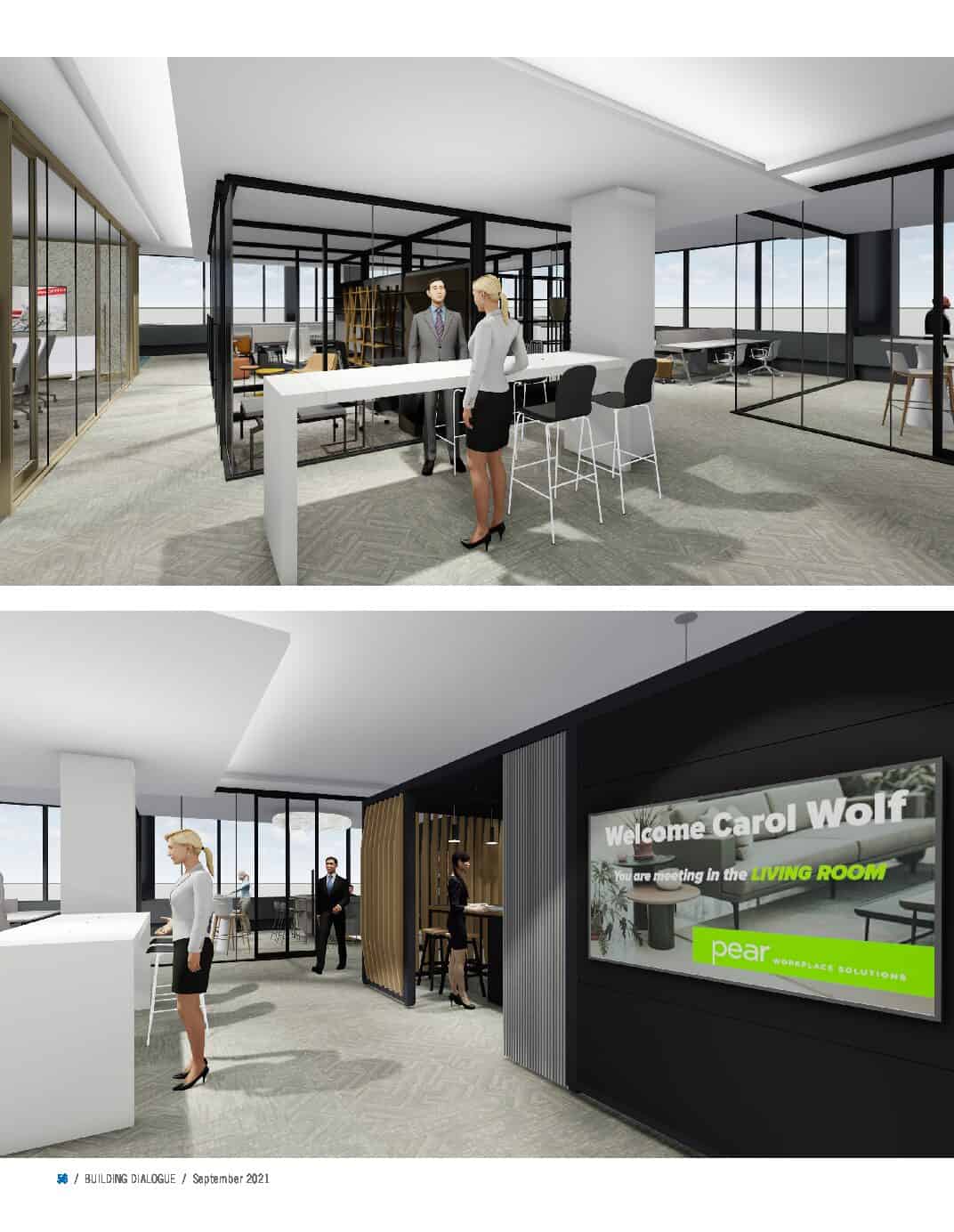Be Our Guest: Infusing Hospitality into the New Workplace

Now that vaccines are widely available and in-person activities largely have resumed, companies of all sizes and across all geographies right now are facing a new challenge: drawing people back to the office. – It’s pretty clear from survey after survey that employees prefer at least some of their workweek spent at home. In fact, many would be willing to look elsewhere for employment if compelled to come back to the office full-time.
At the same time, there are clear benefits to in-person collaboration that are impossible in an all-remote model. Everything from innovation to mentoring to culture are negatively impacted when we can’t all be in the same room.
Taking that into consideration, how do we draw people back in a way that feels supportive and viable long-term for both the employee and company? What was missing from their office before and what is currently missing from their home office experience that a revamped work environment could provide?
Well look no further than Pear Workplace Solutions, which is utilizing Haworth’s “Office As A Hub” return to work strategy, is unveiling its new downtown Denver showroom this month.
Pear’s new showroom is informed by global research and inspired by the need for hospitality-infused work environments. As the dust settles from the COVID pandemic, the inevitable evolution of the office will speed up by about 10 years.


• Our hybrid future. According to Haworth, one of the largest office furniture manufacturers in the world, hybrid work is inevitable and business leaders are on the brink of major changes to accommodate what employees want: the best of both worlds.
As they’ve proven over the last year, executives and employees essentially can work from anywhere. What a good hybrid office provides is the best possible environment in which to work. And that’s not always at a dedicated desk.
The advantage of this model from a cost perspective is a potentially smaller footprint. But this comes with a caveat: maximizing the experience and usability within that smaller footprint. The first place to start is by looking beyond the workstations.
• Crafting your hub – thinking like a host. In the new hybrid model, the most important thing to consider is what the office can provide that home can’t. Connection to people, an environment attuned specifically to their work needs, a place that feels inspiring … and maybe better coffee.
Just like in hospitality design, we have to think about what the office experience can provide beyond the basics. After all, a hotel would be deeply boring if it was just a room with a bed. Yes, that’s an essential element of the experience, but it’s not a compelling reason to choose a hotel.
In the same way, we have to recognize that people don’t always want to sit at their desk all day every day, with the same view, the same sounds, the same coworker next to them. They want options. They’ve gotten used to having options at home. The flexibility and the autonomy to choose their work environment going forward will be a major factor in the reimagined office.
Pear is all-in on this approach. The company has reduced its own space by 40%, doing away with dedicated desks. But the new space actually has more places for employees to work when they come in. Pear is leveraging the new collaborative, conference, outdoor patio and café amenity spaces that its building just installed at 1515 Arapahoe.
So, while the office is smaller, space typology and options have increased. Haworth refers to these space typology options as the “third place.” Where we used to have to go to Starbucks or outside of our offices for good third-place options, now we have those contained in their own floor plans. Tired of working at your desk? Go sit in the lounge. Need to meet with a colleague? Grab coffee in the café. Even in a small footprint, you can create spaces that allow for that all-important flexibility. Pear’s new micro demountable offices are at the heart of its new space, allowing options and access well beyond conventional offices.
• Designing for seamless connection. The great enabler that allows us to evolve into a more long-term hybrid model is technology integration. A successful hybrid model will be enabled by intuitive reservation, occupancy and way-finding software systems. A seamless mobile experience enables their teams to collaborate, book and navigate their facility literally in the palm of their hands!
A dynamic desk booking and tracking system also needs to connect to actual usage through occupancy sensors that let us know real-time data on the actual usage of space. The reservation system used allows its team access, and its occupancy sensors provides actual usage data that enables facilitation of more of what these teams are actually using. Utilizing this data, we can reassure staff, reimagine the portfolio and rejuvenate the workplace.
Undoubtedly we are in for more changes as the hybrid model evolves and new technologies enable us to interact in different and better ways. Business will always make room for a more efficient well-designed space that makes users feel welcome and engaged. We can now achieve a more efficient, effective and sustainable future with increased productivity thanks to this hospitality-driven hybrid approach.
Contact us Today for a Free Consultation
(303) 912-8341
Fitzmartin Consulting Company
Construction Project Management
Owners Representation
Denver Tech Center
6909 South Holly Circle, Suite 345
Centennial, CO 80112
Downtown Denver
1624 Market Street, Suite 207
Denver, CO 80202
